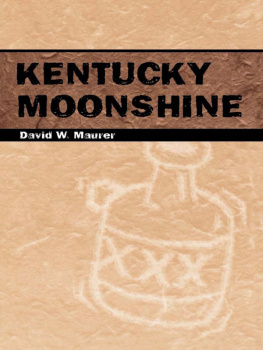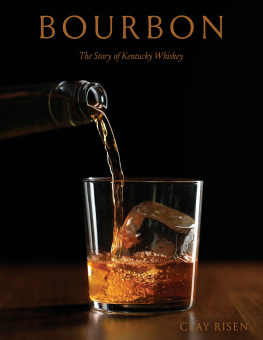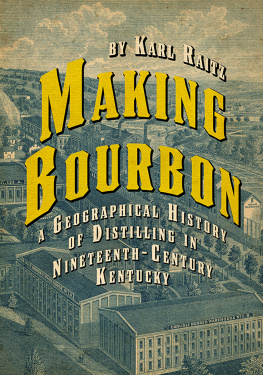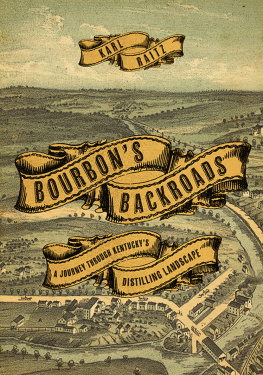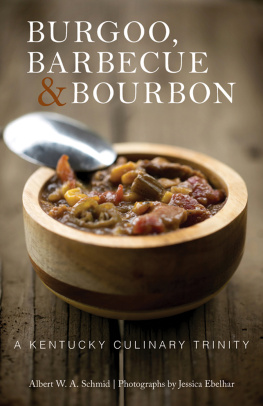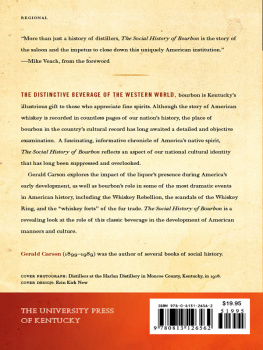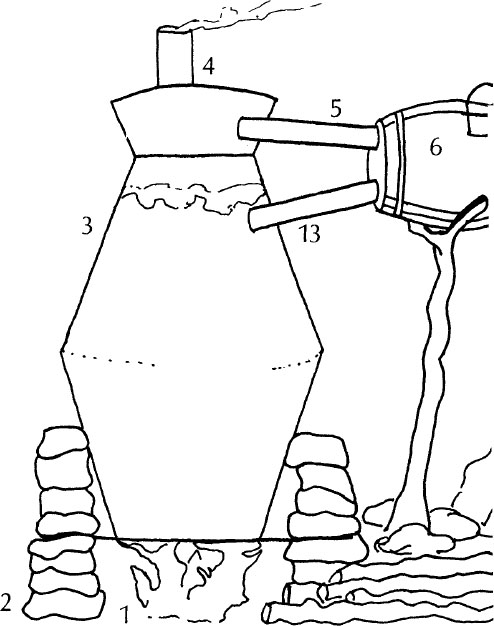S EVERAL PEOPLE have been very helpful in producing this book. First, I am heavily indebted to Mr. Quinn Pearl, now an attorney in Elizabethtown, Kentucky, a former federal agent and former state commissioner of alcoholic beverages, for allowing me to draw upon his many years of experience and to accompany him in the field. Acknowledgments are due also to the federal A.T.F. unit in Louisville for some helpful suggestions. In order to avoid confusion, it should be noted here that the name of the federal agency responsible for taxation and enforcement under the U.S. Treasury Department was called the Alcohol Tax Unit until July 1, 1951. It was then changed to Alcohol and Tobacco Tax Division (IRS). On December 19, 1969, it became the Alcohol, Tobacco and Firearms Division (IRS) and on July 1, 1972, its title changed to Bureau of Alcohol, Tobacco and Firearms, Treasury Department, now abbreviated to A.T.F. Throughout this book, unless it is necessary to make specific reference to this agency within a certain time frame, all personnel will be referred to as federal officers, federal agents, or revenue men. These terms, long established in Kentucky usage, are among the more complimentary names applied to the men who raid the stills.
Several members of my present staff have rendered valuable assistance in collecting and processing material. These include Ms. Ivol Parker, Ms. Linda Resh, Ms. Gail Ardery, Ms. Ellesa Clay High, Ms. Helen McCloy Ellison, Ms. Linc Reinhardt, and Mr. William Riley. I gratefully acknowledge a grant from the Institutional Development and Economic Affairs Service, Inc. (IDEAS) which was instrumental in the preparation of this book.
D.W.M.
1. Firebox for burning wood
2. Masonry furnace
3. Pot still
4. Smoke vent
5. Connection from still cap to puker
6. Puker
7. Connection from puker to thump-keg
8. Thump-keg
9. Connection from thump-keg to flakestand
10. Cold water source for flakestand
11. Flakestand
12. Catch-can
13. Pipe to carry any mash that boils over back into the still
1. Water source for boiler
2. Steam boiler
3. Firebox
4. Pressure burner
5. Steam still
6. Steam connection to still
7. Connection from still to thump-keg
8. Thump-keg
9. Connection from thump-keg through heater-box
10. Heater-box
11. Hose to carry heated beer to still
12. Connection to flakestand
13. Cold water source for flakestand
14. Flakestand
15. Catch-can
16. Compressor for gasoline burner
Bibliography
Alcohol and Tobacco: Summary Statistics. Internal Revenue Service, Treasury Department. Washington: 1972.
Arnow, Harriette S. Flowering of the Cumberland. New York: Macmillan and Company, 1963.
Arnow, Harriette S. Seedtime on the Cumberland. New York: Macmillan and Company, 1960.
Bodley, Temple. History of Kentucky. 4 volumes. Chicago: S. J. Clarke Publishing Company, 1928.
Butler, Mann. A History of the Commonwealth of Kentucky. Berea: Oscar Rucker, Jr., 1969.
Carr, Jess. The Second Oldest Profession: An Informal History of Moonshining in America. Englewood Cliffs, New Jersey: Prentice-Hall, Inc., 1972.
Clark, Thomas D. A History of Kentucky. New York: Prentice-Hall, Inc., 1937. (Revised edition, Lexington: The John Brad-ford Press, 1950.)
Clark, Thomas D. Kentucky: Land of Contrast. New York: Harper and Row, 1968.
Collins, Lewis. Historical Sketches of Kentucky. Maysville: Lewis Collins and J. A. & U. P. James, Cincinnati, 1847. (Revised edition, Collins, Lewis and Collins, Richard H. Collins' Historical Sketches of Kentucky. 2 volumes. Covington: Collins & Company, 1874.)
Connelley, William E. and Coulter, E. M. History of Kentucky. 5 volumes. Chicago: The American Historical Society, 1922.
Crowgey, Henry G. Kentucky Bourbon: The Early Years of Whiskeymaking. Lexington: The University Press of Kentucky, 1971.
Davenport, F. Garvin. Antebellum Kentucky: A Social History 18001860. Oxford, Ohio: The Mississippi Valley Press, 1943.
Farmer, John S. and Henley, William E. Slang and Its Analogues. New Hyde Park, N.Y.: University Books, 1966.
The Foxfire Book. Edited by Eliot Wiggington. Garden City: Doubleday & Company, Inc., 1972.
Haney, William H. The Mountain People of Kentucky. Cincinnati: The Robert Clark Co., 1906.
Kellner, Esther. Moonshine: Its History and Folklore. Indianapolis: The Bobbs-Merrill Company, 1971.
Kephart, Horace. Our Southern Highlanders. New York: Outing Publishing Company, 1913.
Marshall, Humphrey. The History of Kentucky. 2 volumes. Frankfort: G. S. Robinson, 1824.
Montell, William Lynwood. The Saga of Coe Ridge: A Study in Oral History. Knoxville: The University of Tennessee Press, 1970.
A New English Dictionary on Historical Principles. Oxford: Clarendon, 1888.
Raine, James Watt. The Land of Saddlebags: A Study of the Mountain People of Appalachia. New York: Published jointly by Council of Women for Home Missions and Missionary Education Movement of the United States and Canada, 1924.
Smith, Z. F. The History of Kentucky. Louisville: Courier-Journal Job Printing Company, 1886.
Tapp, Hambleton. A Sesqui-centennial History of Kentucky. Edited by Frederick A. Wallis. 4 volumes. Louisville: The Historical Record Association, 1945.
United States Statutes at Large. Volumes 3 (1861) and 12 (1865). Boston: Little, Brown & Company.
Verhoeff, Mary. The Kentucky Mountains: Transportation and Commerce 1750 to 1911. Louisville: John P. Morton and Co., 1911.
1
LET'S MAKE MOONSHINE
Get ye a copper kettle,
Get ye a copper coil
TRADITIONAL
I T'S EASY TO make moonshine. Anyone can do it. In spite of all the secrecy which has, for thousands of years, been woven about the craft of distilling, and despite the complexity that often characterizes the modern chemical processes in progressive distilleries, the basic procedures are very simple. Not only that, but the materials are so common that they are probably right at hand in your own cupboard. And the equipment is in your own kitchen. So why not make a batch? A small batch, that is. Say a fifth or twowhich is quite enough under the law to technically qualify you as a moonshiner.
Where will you make it? That is the first problem confronting every distiller, legitimate or illegitimate. Probably you'll decide on the kitchen sink, and that's a good choice, for there you have running water and a drain down which to dispose of any by-products you don't reclaim. So you can select the sink as your base of operations.
Equipment? No problem. On the stove you'll probably have a pressure cooker; a five-gallon capacity cooker of the type used in canning is preferable. This pressure cooker will become your still. In fact, it will be very close to the copper

